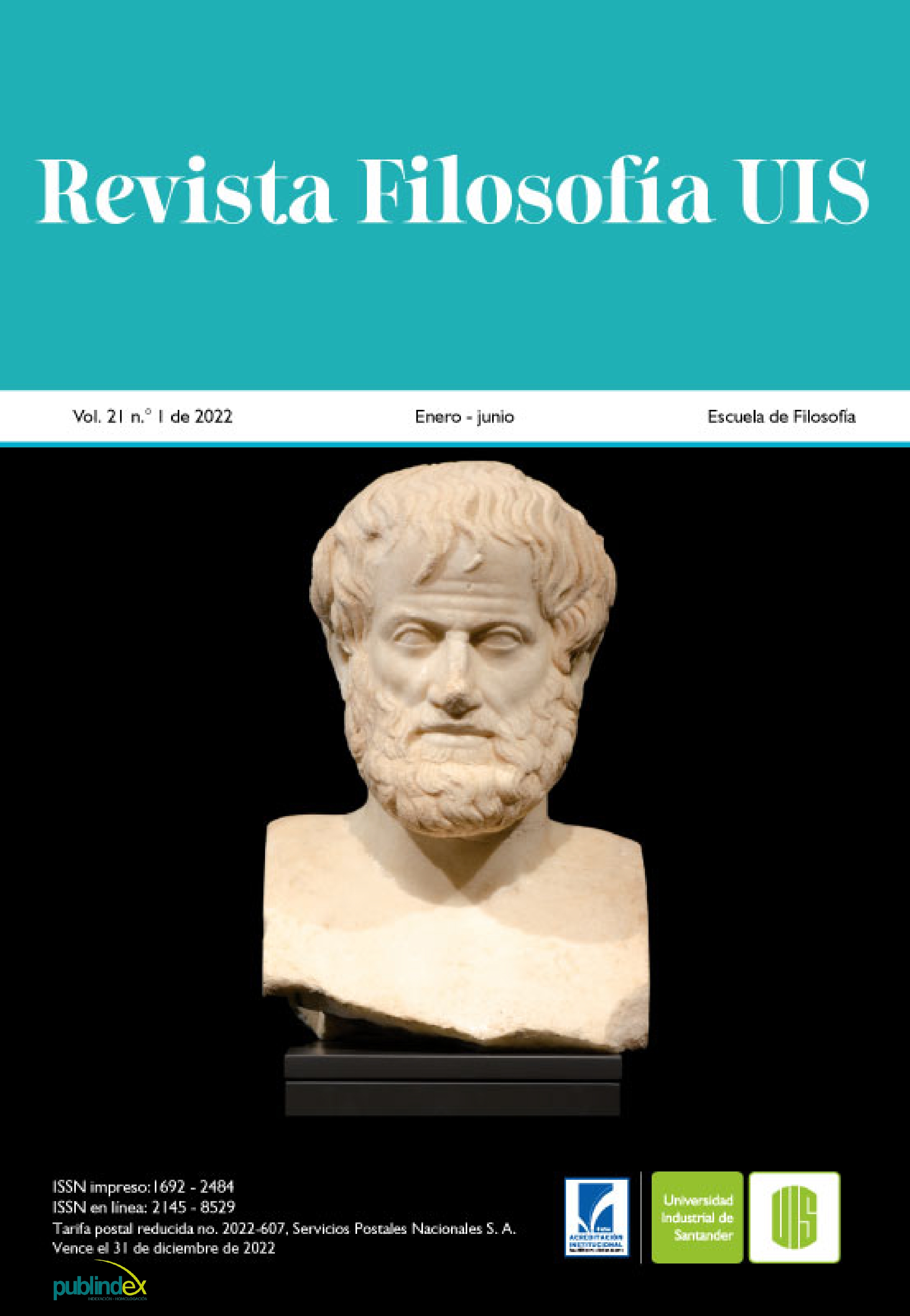Representation in Hobbes’ Leviathan: The Metamorphosis of Natural Man in Civil Person: the metamorphosis of natural man in civil person.
Published 2022-01-03
Keywords
- Hobbes,
- representation,
- aesthetics and politics,
- imagination,
- sovereignty
How to Cite
Copyright (c) 2022 Revista Filosofía UIS

This work is licensed under a Creative Commons Attribution 4.0 International License.
Abstract
the purpose of this investigation is to determine the unifying role between natural state and civil state developed with the concept of representation in Chapter XVI of Leviathan. Representation is a transitional concept between the natural and civil state: where symbolism takes the place of practical rationality and settles as what’s real for men. It is because of the ability to create artificial persons that men can freely attribute predicates to things they don't really have, and in addition to donating their physical body, they can create the person of the State, the Leviathan; Assume sovereignty and subjection and recreate human subjectivity politically.
Downloads
References
- Altini, C. (2012). Entre el cielo y la tierra: Hobbes y el problema teológico-político. Brujas.
- Branda, C. I. (2008). Razón natural y racionalidad política en el Leviatán de Thomas Hobbes. Res publica, 20, 67-94. https://revistas.um.es/respublica/article/view/62811
- Brito Vieira, M. (2009). The Elements of Representation in Hobbes: Aesthetics, Theatre, Law, and Theology in the Construction of Hobbes's Theory of the State. Brill.
- Engell, J. (1981). The Creative Imagination: Enlightenment to Romanticism. Harvard University Press.
- Foucault, M. (2008). Defender la sociedad. (H. Pons, trad.). Fondo de Cultura Económica.
- Gallego García, E. A. (2017). Representación y Poder. Un Intento de Clarificación. Dykinson, S.L.
- Guisán, E. (1986). Ética y Política en Hobbes. Revista de Estudios Políticos, 50, 143-178. http://www.cepc.gob.es/publicaciones/revistas/revistaselectronicas?IDR=3&IDN=208&IDA=16313
- Hobbes, T. (2005). Leviatán. O la materia, forma y poder de una república eclesiástica y civil. Fondo de Cultura Económica.
- Jiménez Castaño, D. (2012). La prioridad del placer sobre el deseo en la teoría de las pasiones de Thomas Hobbes: una explicación, materialista, mecanicista y fisiológica. Cauriensia. Revista anual de Ciencias Eclesiásticas, 7, 271-280. https://dialnet.unirioja.es/descarga/articulo/4235406.pdf
- Negro Pavón, D. (1977) Thomas Hobbes. De la Razón Estética a la Razón Política. Revista de Estudios Políticos, 212, 11-57.
- Núñez-Prado, C. (2020). La imaginación: el principio, medio y fin del estado de naturaleza hobbesiano. Revista Filosofía UIS, 19(1), 59-79. https://doi.org/10.18273/revfil.v19n1-2020001
- Núñez-Prado, C. (2021) Leyes de naturaleza o ¿cómo las personas preparan su carácter para soportar el Estado civil? Revista Eidos, 35, 349-373. https://rcientificas.uninorte.edu.co/index.php/eidos/article/view/12476
- Pitkin, H. F. (1985). The Concept of Representation. University of California Press.
- Skinner, Q. (2005). Hobbes on Representation. European Journal of Philosophy, 13(2), 155-184. https://doi.org/10.1111/j.0966-8373.2005.00226.x
- Rodríguez Rodríguez, C. (2008). Epistemología y lenguaje en Thomas Hobbes. Construcción de conceptos y unidad epistémica. Universidad de La Salle.
- Rosello, D. (2014). Hobbes y el hombre lobo: devenir animal en (y ante) la soberanía. En M. Figueroa (Ed.), Poder y ciudadanía. Estudios sobre Hobbes, Foucault, Habermas y Arendt (pp. 11-36). RIL editores.
- Rutheford, D. (2015). Hobbes in Moral Virtue and the Laws of Nature. En P. Easton y K. Smith (Eds.), The Battle of the Gods and Giants Redux: Papers Presented to Thomas M. Lennon. Brill.

